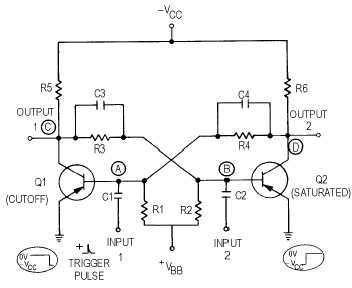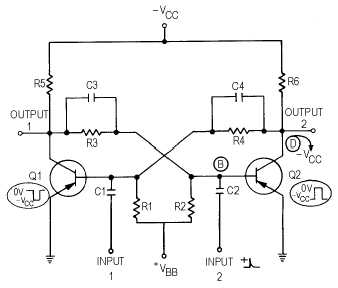3-20
As before, assume that transistor Q1 is saturated and transistor Q2 is cut off. Two methods are
available to cause the flip-flop to change states. First, a positive-going pulse can be applied to input 1 to
cause Q1 to change from saturation to cutoff. Second, the same result can be achieved by applying a
negative-going pulse to input 2. Transistor Q2 would then change from Cutoff to saturation. Normally, a
pulse is applied to the saturated transistor causing it to cut off. An input pulse which is of the correct
polarity to change the state of the flip-flop is, as before, called a trigger pulse.
In figure 3-23 a positive-going trigger pulse has been applied to input 1. The flip-flop has now
changed states; Q1 is cut off and Q2 is saturated. If a second positive-going trigger pulse is applied to
input 1, it has no effect. This is because Q1 is already cut off; therefore, a positive pulse on its base has no
effect. But if a positive-going trigger pulse were applied to input 2, the flip-flop would change back to its
original state as shown in figure 3-24.
Figure 3-23.—Bistable multivibrator (flip-flop).
Figure 3-24.—Flip-flop (original state).




